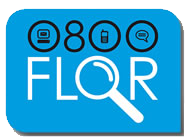It determines the lending rates that many lenders charge for consumer loan products. The prime rate is used often as an index in calculating rate changes to adjustable rate mortgages (ARM) and other variable rate short term loans. Many credit cards with variable interest rates have their rate specified as the prime rate (index) plus a fixed value commonly called the spread. “Best in this sense are the borrowers with the least risk of default,” says Jeanette Garretty, chief economist and managing director at Robertson Stephens, a wealth management firm in San Francisco. It’s usually the lowest interest rate banks will charge and is a benchmark to determine interest rates for other products, like lines of credit, credit cards and small business loans. The federal funds rate is the rate banks charge each other for short-term loans.
Impact on Borrowing Costs
- If the prime rate goes up, the bank could end up charging you a higher interest rate so your monthly payment on variable debt would increase.
- Here's the prime rate today in 2024 and the Federal Reserve's influence on today's prime rate.
- The Federal Reserve, often called the Fed, is the central bank of the United States and one of the most influential forces in the economy.
- Raising rates to cool inflation can mean sacrificing hiring; keeping rates too low to help more workers find work could run the economy too hot.
- Banks usually only charge the prime rate to large, corporate customers with lots of financial resources.
Whenever the prime rate rises, variable credit card rates rise, too. That's why you should pay close attention to when the Fed raises or lowers the fed funds rate. Banks base the prime rate on the federal funds rate, generally setting it three percentage points higher.
What To Look For From the FOMC In 2025
Higher plus500 scam rates can draw capital into U.S. markets as investors seek better returns, leading to capital outflows from emerging economies. Companies may postpone expansion plans or cut costs, including hiring freezes or layoffs, to adjust to the new financial reality. This can have a ripple effect on the broader economy as businesses scale back their activities.
Increased Credit Card Costs
The Federal Reserve, often called the Fed, is the central bank of the United States and one of the most influential forces in the economy. Its decisions shape financial markets, influence consumer behavior, and impact businesses. If the jobs market were to weaken rapidly, causing recession fears to surface, then interest rates could end 2025 close to 3%. If the jobs market remained robust, the cuts are still probable, but rates will likely remain closer to 4% and more attention will be given to inflation trends. The path interest rates ultimately take will depend on incoming economic data. Still, it is most likely that interest rates continue to trend down from their current 4.% to 4.75% range, but the pace of that decline is in question for the year ahead.
Since they're based on the federal funds rate, prime rates also reflect the state of the economy. The federal funds rate is one of the most important interest rates in the U.S. economy. That's because it impacts monetary and financial conditions, which in turn have a bearing on critical aspects of the broader economy including employment, growth, and inflation. “Decisions by a bank’s asset and liability committee will ultimately determine where those other rates will settle,” says Garretty.
The prime rate plus a percentage forms the base of almost all consumer and business interest rates. Understanding these impacts gives a clearer view of how monetary policy affects financial decisions, household budgets, and everyday expenses in the overall economy. While higher rates roboforex review 2021 can help control inflation and benefit savers, they also create challenges, such as slowing job growth and increasing the national debt.
What Loans Are Not Affected by a Change in the Prime Rate?
It is often used as a reference rate (also called the base rate) for many types of loans, including loans to small businesses and credit card loans. On its H.15 statistical release, "Selected Interest Rates," the Board reports the prime rate posted by the majority of the largest twenty-five banks. The prime rate is determined by individual banks and used as the base rate for many types Automated trading of loans, including loans to small businesses and credit cards. Both the federal funds rate and interest rates are some of the most important financial indicators in the U.S.
The chief distinction is that the federal funds rate sets the range that banks will lend or borrow to each other overnight. Because this impacts borrowing costs and financial conditions, stock markets are typically sensitive to changes in these rates. The federal funds rate also indirectly affects short-term interest rates. Conversely, interest rates, which are set by the Federal Reserve, determine the rate that it costs for banks to borrow. Bankrate.com is an independent, advertising-supported publisher and comparison service.



